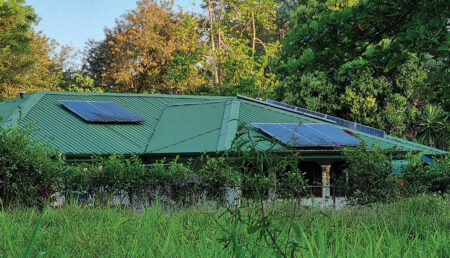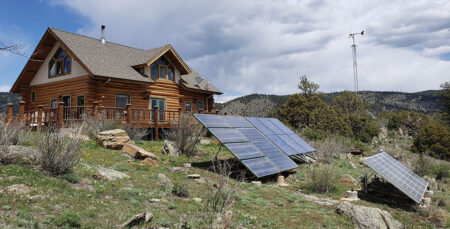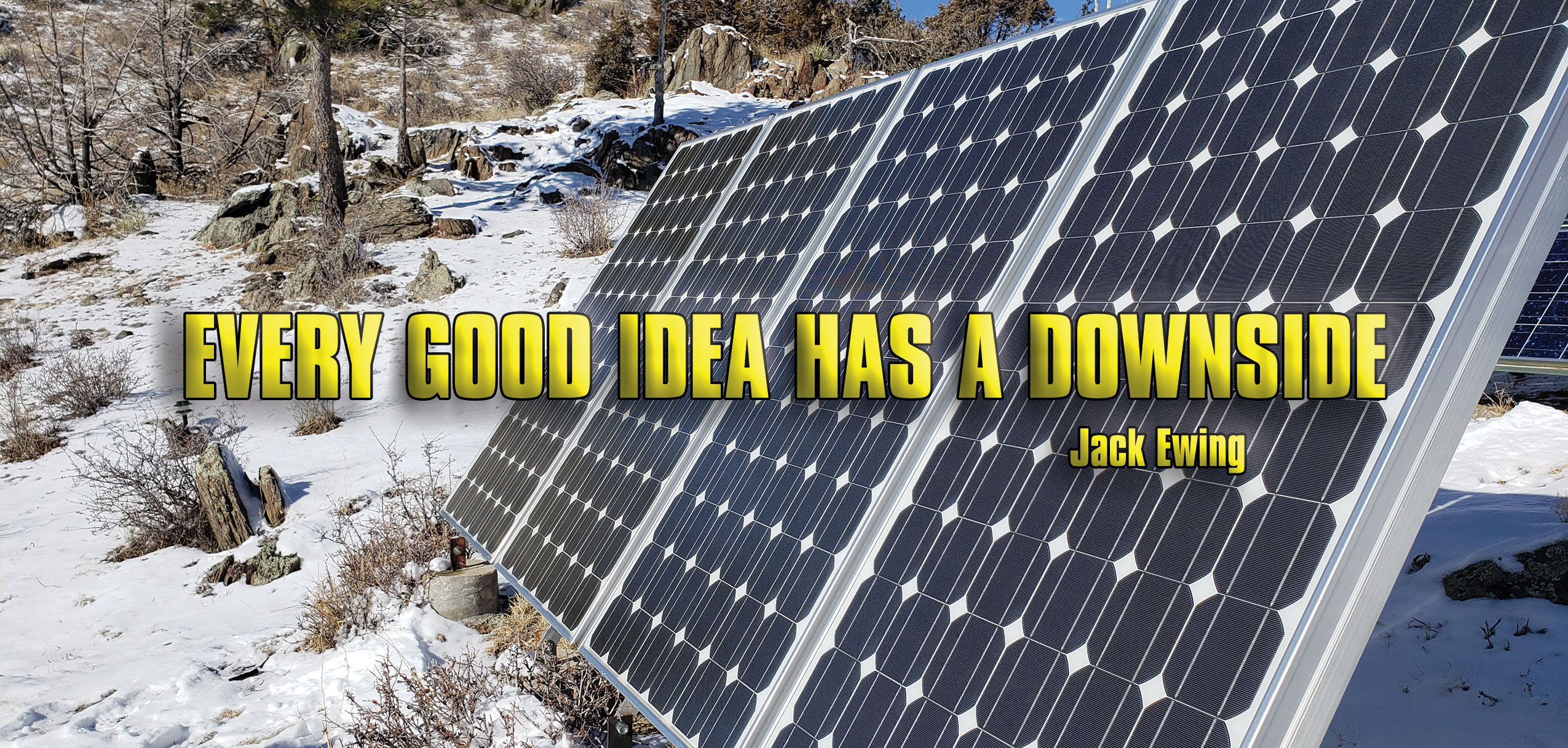Every Good Idea Has A Downside
Back in the 1970s and the early 80s, before we got electricity in our Hacienda Barú home, Diane and I often lamented the lack of hot water in the shower. Cold water was okay on a hot day, but it was bad news on a chilly, rainy evening with a cool breeze blowing outside. One scorching summer afternoon I returned to the house from work and stuck my head under the faucet to cool off. The water wasn’t very cool, but I was hot and sweaty, and it was still refreshing. Without warning, it turned scalding hot. Letting out a yelp, I jerked my head from beneath the tap. After a short time, it cooled down enough that it again felt good on back of my neck. “Now I know why all of our neighbors leave the water running 24 hours a day,” I bemoaned. Very few people lived in the area, and each household had its own source of water, usually a creek or a spring. There was never a shortage of water, and it didn’t cost anything, so there was really no reason to turn it off. All of our neighbors left it running all of the time. Many homes didn’t have faucets and couldn’t stop the flow even if they wanted to.
Our water came from a free-flowing spring located on a hill above our house and was gravity fed through a black plastic hose until it connected to our plumbing. Though our employees thought it was entirely unnecessary, we did have faucets, and out of habit, turned the water off when we weren’t using it. The tubing was mostly underground, but one short section was exposed, and every year, at the beginning of the dry season, the sun, on its annual journey north, arrived at just the right part of the afternoon sky so that it bore down on that bare section of plastic tubing. For about three weeks we had to be careful of the super-heated water. “Too bad we can’t save some of that hot water for bath time,” lamented Diane”.
“Maybe we can”, I replied, scratching my head. An inkling of an idea had wormed its way into my mind.
Over the next few days, the idea started to take shape, and on our next weekly trip to town I bought a large roll of the black plastic tubing. The next day I went to work turning my idea into reality. All 100 meters of the hose went on the roof, in a big spiral, on the same side of the house as the shower. Connecting it to the pipe that supplied water to the shower head was easy enough, and “bingo” we had hot water. The temperature was about right for bath time at 7:00 pm, at least for the kids and Diane, and it was still lukewarm when my turn came, and that was better than it had been before. Little by little our system became more sophisticated evolving from the plain hose to include a metal holding tank and then an insulated holding tank, and before we knew it, we even had a little hot water the next morning. In the year 1986 electricity arrived at our neck of the woods, and we could have installed a regular hot water heater, but there was no reason to do so. Our solar system supplied all of our hot water needs.
 Hacienda Barú Lodge has for years had a much more sophisticated solar hot water system, and we once looked into the possibility of installing enough solar panels to generate all of the electrical energy needed for the operation. At that time the Costa Rica electrical utility Instituto Nacional de Electricidad (ICE) offered a special deal for users who wanted to install solar panels on their homes. It was up to the homeowner to install the solar panels, and ICE would give you a special electric meter that runs forward when you are using more electricity than you are generating and backwards when you aren’t using much and are generating a lot. An example of this latter would be a sunny day when nobody is home. Every three months you settled your electric bill. You paid only the difference between the total amount of electricity used and the amount that your panels generated, but if, in the final count, you generated more than you used, you didn’t get paid for the extra. The utility ended up getting a lot of free electricity, but it still wasn’t a bad deal for the user. Solar panels became a common sight on rooftops, not only of homes but businesses as well. While I was still pondering investing a rather large sum of money in a solar electric system for the lodge, ICE put an end to the offer. I don’t know why, but I would guess that so many people were generating so much of their own electricity that sales went way down.
Hacienda Barú Lodge has for years had a much more sophisticated solar hot water system, and we once looked into the possibility of installing enough solar panels to generate all of the electrical energy needed for the operation. At that time the Costa Rica electrical utility Instituto Nacional de Electricidad (ICE) offered a special deal for users who wanted to install solar panels on their homes. It was up to the homeowner to install the solar panels, and ICE would give you a special electric meter that runs forward when you are using more electricity than you are generating and backwards when you aren’t using much and are generating a lot. An example of this latter would be a sunny day when nobody is home. Every three months you settled your electric bill. You paid only the difference between the total amount of electricity used and the amount that your panels generated, but if, in the final count, you generated more than you used, you didn’t get paid for the extra. The utility ended up getting a lot of free electricity, but it still wasn’t a bad deal for the user. Solar panels became a common sight on rooftops, not only of homes but businesses as well. While I was still pondering investing a rather large sum of money in a solar electric system for the lodge, ICE put an end to the offer. I don’t know why, but I would guess that so many people were generating so much of their own electricity that sales went way down.
Lots of solar panels that were installed 25 to 30 years ago are now coming to the end of their useful lives, and the problem of what to do with them is rearing its ugly head. Do we just dump them in a landfill where all kinds of nasty stuff like, cadmium, gallium, selenide, and lead can leach out and end up poisoning our rivers and aquifers? Or what? It’s kind of reminiscent of nuclear reactors. They don’t emit any CO2, aren’t noisy, and don’t occupy much land, but what do you do with the waste. Think about this: If every house in the United States had enough solar panels to generate all of their electrical needs, what would we do with hundreds of millions of panels when the time for their disposal comes around?
 Another downside of solar electric is that large solar farms are usually built in the desert where the sun shines brightly all day long. There aren’t many of these around, but the few existing industrial sized operations have been criticized for the amount of land taken away from natural ecosystems. Deserts may appear to be barren and devoid of most flora and fauna, but they actually harbor an incredible diversity of life forms.
Another downside of solar electric is that large solar farms are usually built in the desert where the sun shines brightly all day long. There aren’t many of these around, but the few existing industrial sized operations have been criticized for the amount of land taken away from natural ecosystems. Deserts may appear to be barren and devoid of most flora and fauna, but they actually harbor an incredible diversity of life forms.
Solar electricity seems like such a great idea, but even great ideas have a downside.
Jack Ewing was born and educated in Colorado. In 1970 he and his wife Diane moved to the jungles of Costa Rica where they raised two children, Natalie and Chris. A newfound fascination with the rainforest was responsible for his transformation from cattle rancher into environmentalist and naturalist. His many years of living in the rainforest have rendered a multitude of personal experiences, many of which are recounted in his published collection of essays, Monkeys are Made of Chocolate. His latest book is, Where Jaguars & Tapirs Once Roamed: Ever-evolving Costa Rica.

